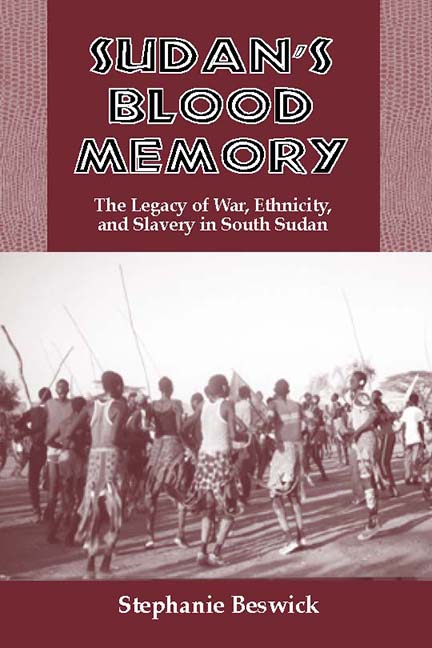Book contents
- Frontmatter
- Dedication
- Contents
- Maps
- Preface
- Acknowledgments
- A Note on Orthography and Languages
- A Note on Sources
- Map
- 1 Introduction
- 2 Geography and Brief History of Sudan
- 3 The Changing Nilotic Frontier
- The Ethno-Historical Formation of Southern Sudan
- The Ascendancy of the Dinka in Southern Sudan
- Foreign Intrusion and Its Consequences
- Notes
- Glossary
- Bibliography
- Index
3 - The Changing Nilotic Frontier
Published online by Cambridge University Press: 23 July 2019
- Frontmatter
- Dedication
- Contents
- Maps
- Preface
- Acknowledgments
- A Note on Orthography and Languages
- A Note on Sources
- Map
- 1 Introduction
- 2 Geography and Brief History of Sudan
- 3 The Changing Nilotic Frontier
- The Ethno-Historical Formation of Southern Sudan
- The Ascendancy of the Dinka in Southern Sudan
- Foreign Intrusion and Its Consequences
- Notes
- Glossary
- Bibliography
- Index
Summary
“We see a similarity between the Dinka and the ancient culture of Egyptians.”
Samuel Bulen Alier, a Bor-Atoc Dinka artistArchaeological studies strongly suggest that the most populous Nilotic culture of present South Sudan, the Dinka, did not arrive in the region until the fourteenth to fifteenth centuries. Yet, it has long been held by some older scholarship that all the Western Nilotic peoples originated in Southern Sudan. The Dinka, who comprise the largest population of Western Nilotes in Sudan today, however, support the archaeological studies and possess oral histories that their forefathers once lived much father north. Many suggest, for example, that they originated from the land between the Blue and White Niles, the Gezira. Others claim an ancient origin even closer to Egypt. What follows is a comparison of Dinka oral histories and myths cross-checked with linguistics, and Nubian geographers and travelers’ accounts. Many East African Nilotic peoples possess a common myth/history which may hold a key to their origin.
Histories and Myths of a Central Sudanese Homeland
Within the Western Nilotic Dinka, Luo, Shilluk, Anyuak, Nuer, and Atwot are myths concerning migrations from a large body of water. For example, the Atwot remember that before they lived in Southern Sudan: “[A]ll Dinka, Nuer and Atwot came from a place known as adekdit, a body of water so vast that a bird would be unable to cross its expanse without dying.” An Eastern Twic Dinka, Ayuel Parmena Bul, states: “It is said we came from the north, possibly from Egypt and the Mediterranean. There are two reasons for this: our people picture a river where a bird can fly until it gets so tired it falls in the water, but there is no river in our area like that. Yet the Dinka terminology for this body of water is abab dit [ocean], a river with no shore. We think that this story refers to the Mediterranean or the Red Sea and so we believe we come from the north.” Yet no scholar has been able to place this mythical “sea” geographically.
Pertaining to Dinka connections to Egypt, Samuel Bulen Alier, a Bor- Atoc Dinka artist states:
We see a similarity between the Dinka and the ancient culture of Egyptians. Their drawings show canoes, spears and ivory very similar to our own.
- Type
- Chapter
- Information
- Sudan's Blood Memory , pp. 15 - 26Publisher: Boydell & BrewerPrint publication year: 2004

